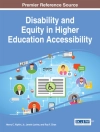It’s not what you do, it’s how you think about what you do.
Mindframes—your internal set of beliefs about your role as school leader—determine the high-impact leadership practices you choose to implement. In other words, how you think about the impact of the actions you take has more effect on student achievement than your leadership practices themselves.
Building on over twenty-five years of Visible Learning research and girded by a theory of action that ensures school leaders have the expertise to select, implement, and evaluate high impact interventions, 10 Mindframes for Leaders: The VISIBLE LEARNING® Approach to School Success brings the mindframes of ten world-renowned educators to life. Ten chapters, each written by a different thought leader, detail a mindframe at the heart of successful school leadership, along with the high probability influences that make each mindframe visible. A must-have resource for any educator working toward student achievement at ever-higher levels, each chapter includes:
• The most current, up-to-date findings from the Visible Learning research, including the factors from Visible Learning that support each mindframe
• Practical ideas for leaders to implement high-impact strategies in classrooms and schools
• Vignettes, questions, insights, and exercises to help educators clarify and refine their own mindframes
Lead your school to reform from the inside out. Cultivate these ways of thinking, and you’re more likely to have major impacts on the learning lives of those students entrusted to your care.
Includes Contributions From…John Hattie, Peter De Witt, Raymond L. Smith, Doug Fisher, Janet Clinton, Nancy Frey, Dylan Wiliam, Dominique Smith, Jenni Donohoo, Laura Link, Michael Fullan, Sugata Mitra, Zaretta Hammond, Jim Knight
Tabela de Conteúdo
About the Editors
About the Contributors
Introduction—John Hattie and Raymond Smith
Chapter 1. “I am an evaluator of my impact on teacher/student learning”—Janet Clinton
Chapter 2. “I see assessment as informing my impact and next steps”—Dylan Wiliam
Chapter 3. “I collaborate with my peers and my teachers about my conceptions of progress and my impact”—Jenni Donohoo
Chapter 4. “I am a change agent and believe all teachers/students can improve”—Michael Fullan
Chapter 5. “I strive for challenge rather than merely ‘doing my best’”—Zaretta Hammond
Chapter 6. “I give and help students/teachers understand feedback and I interpret and act on feedback given to me”—Peter M. De Witt
Chapter 7. “I engage as much in dialogue as in monologue”—Douglas Fisher, Nancy Frey, and Dominique Smith
Chapter 8. “I explicitly inform teachers/students what successful impact looks like from the outset”—Laura Link
Chapter 9. “I build relationships and trust so that learning can occur in a place where it is safe to make mistakes and learn from others”—Sugata Mitra
Chapter 10. “I focus on learning and the language of learning”—Jim Knight
Conclusion—John Hattie and Raymond Smith
References
Index
Sobre o autor
Dr. Raymond Smith is an Author Consultant with Corwin Press. Prior to joining Corwin Dr. Smith served as adjunct professor at the University of Colorado Denver Health Sciences Center teaching within a principal preparation program and currently works with Florida Atlantic University in their aspiring leader program. Dr. Smith’s diverse experience includes over 38 years of teaching and leadership at the building (high school principal), central office (Director of Secondary Education), and university levels. Subsequent to completing his doctorate in educational leadership and innovation in 2007, Dr. Smith pursued his area of specialty and passion in leadership development by authoring several articles for the Ohio Department of Education, coauthoring three books: the first entitled School Improvement for the Net Generation (2010), the second entitled The Reflective Leader: Implementing A Multidimensional Leadership Performance System (2012), and the third entitled The Responsive School (in print). In addition to writing about leadership and leadership development, Dr. Smith is an activator of learning, leading others in workshops around Professor John Hattie’s research in Visible Learning as one of 21 Visible Learning Plus Consultants with Corwin. He also conducts workshops around Dr. James Popham’s research regarding designing and implementing defensible teacher evaluation programs.












